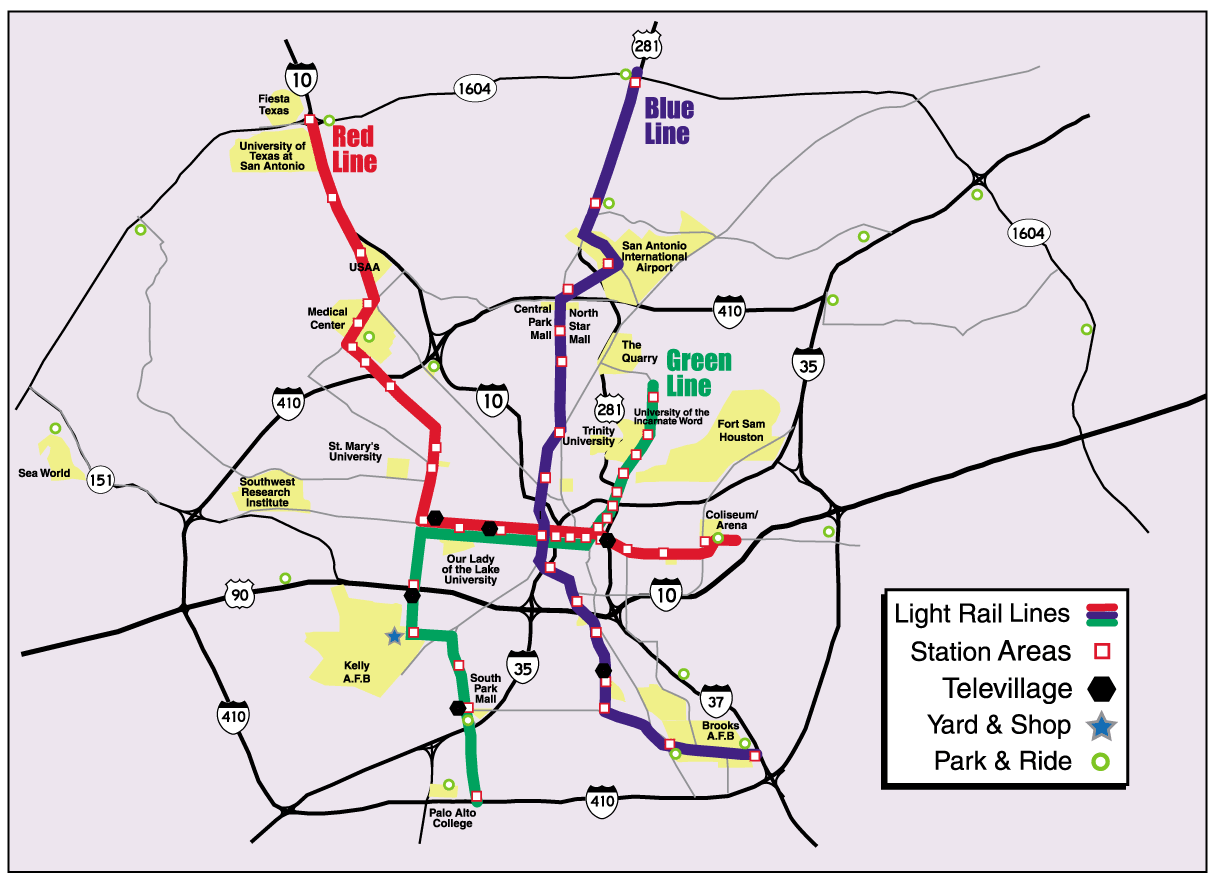San Antonio has come close.
As early as 2000, VIA developed a plan for a 53-mile multi-line light rail system that would have connected the downtown core to UTSA, Medical Center, San Antonio International Airport, The Pearl, UIW, OLLU, Kelly AFB, and the present-day sites of Brooks City Base and AT&T Center.
Estimated to cost $1.5 billion, the system was to be funded by a quarter-cent sales tax that would have been added to VIA's existing half-cent sales tax. The quarter-cent would generate at least $30 million a year in revenue to leverage federal grants for light rail, making it a debt free, pay-as-you-go system.
If approved, the first trains were projected to begin running in 2008, with construction to continue through 2025.
However, voters rejected the quarter cent sale tax increase to fund it in the May 2000 elections.
Opposition to the plan was led by the Texas Public Policy Foundation, a conservative think tank founded and led by San Antonio millionaire and climate change denialist James Leininger.
In the months leading up to the election, the foundation produced more than half a dozen press releases and reports criticizing VIA's project.
On the other hand, the project was openly backed by companies like USAA and the Spurs, and was endorsed by the Express-News.
Then, in 2011 VIA proposed to implement a modern streetcar system in downtown San Antonio.
The initial corridor would have covered 5.9 miles of surface streets and provided connections between Centro Plaza west of downtown, up to the Pearl, and straight through downtown to Cesar Chavez. A future line would have extended to the Alamodome and Robert Thompson Transit Center east of downtown.
Opposition to the plan was led by the firefighter’s union and astroturf organizations “Let The People Vote” and “Streetcar Vote” who spread blatantly false and misleading propaganda. Both groups were led by Greg Brockhouse, a now-former city council member and twice-failed mayoral candidate.
Why did the fire union get involved?
The fire union’s bizarre campaign was seen by many as an attempt to gain leverage with the city manager's office, which they claimed was trying to lower public safety employee costs as a way to shave funds from the budget.
The firefighters union donated $53,000 to Let The People Vote and circulated fliers suggesting that the city was ignoring public safety in order to fund the streetcar. They falsely claimed that the city was spending over $400 million, when in fact most of that amount was slated to come from state and federal funds, with only $32 million from the city over a span of two decades. As a side note, at the time, over ⅔ of the city budget was already devoted to public safety (fire and police).
Let the People Vote wanted to place on the ballot a city charter amendment that would require a public vote before any streetcar plan could proceed.
Despite the City Clerk ruling that 8,000 pages of signatures were not valid, City Council voted to disband the project during newly elected Mayor Ivy Taylor’s first executive session on July 28, 2014.
County Judge Nelson Wolff followed suit and pledged to reverse the county’s commitment.
The city charter amendment did not make it to the ballot in 2014, but did the following year, when it passed.



